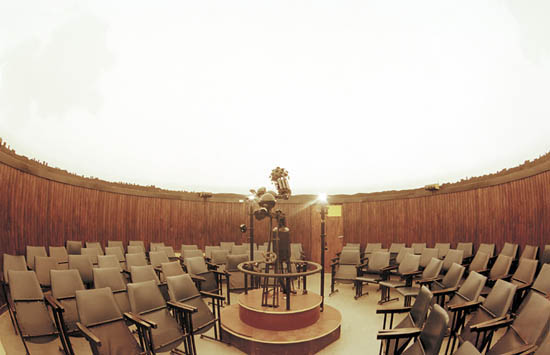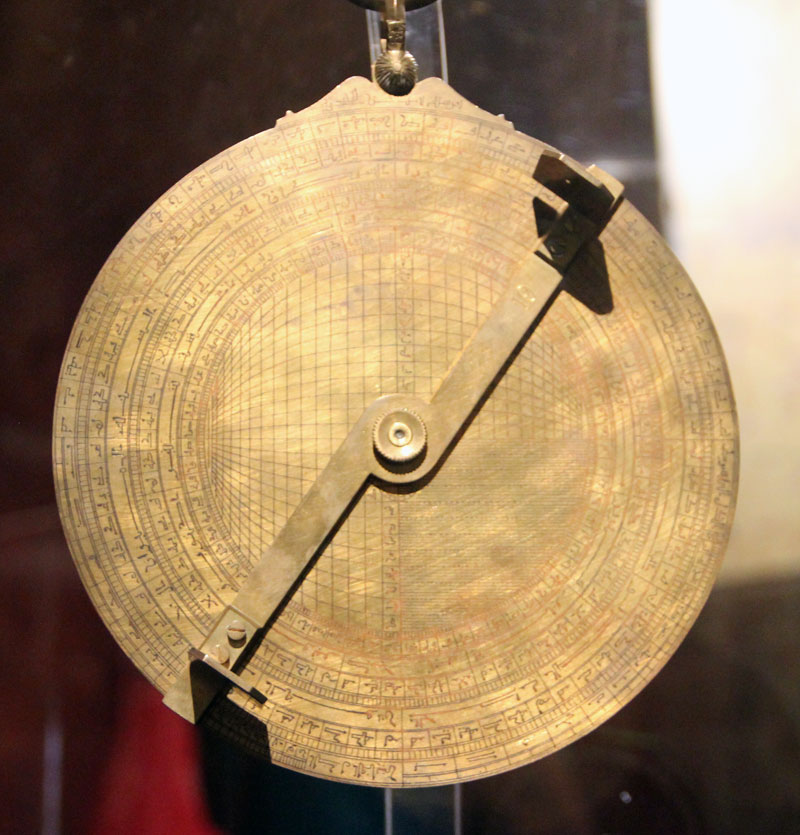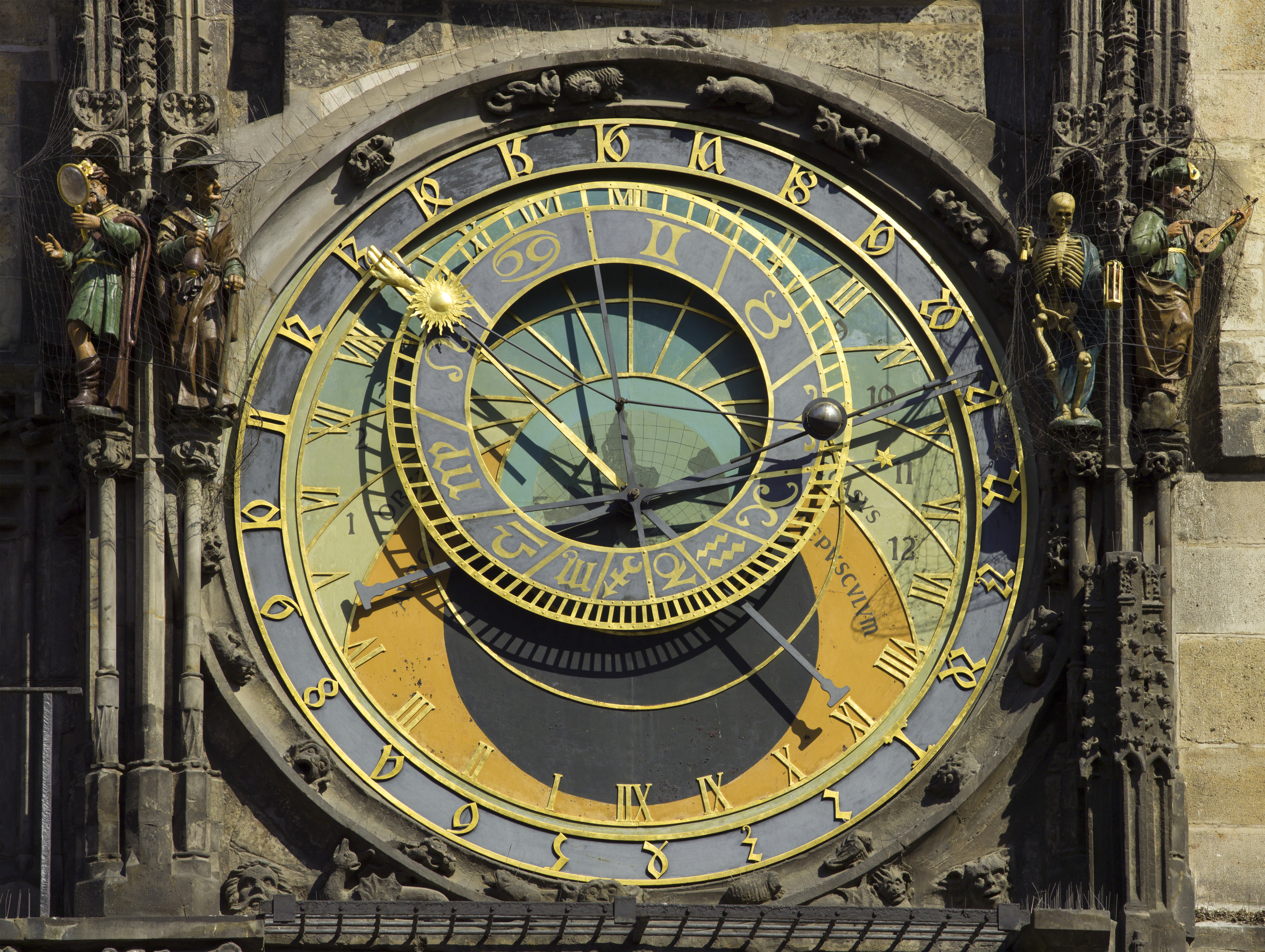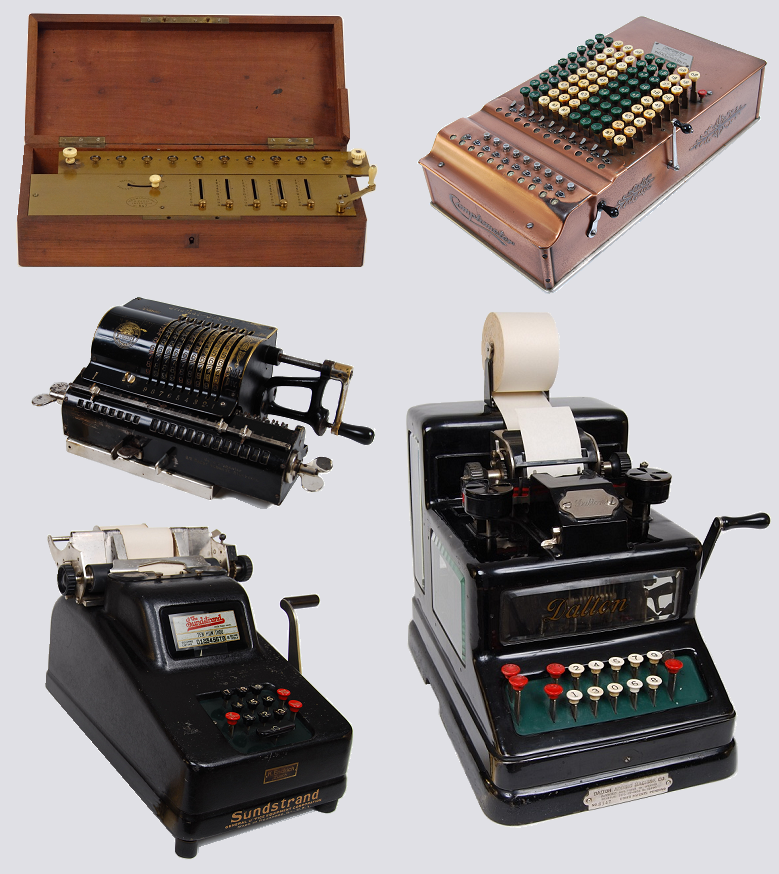|
Equatorium
An equatorium (plural, equatoria) is an astronomy, astronomical Mechanical calculator, calculating instrument. It can be used for finding the positions of the Moon, Sun, and planets without arithmetic operations, using a geometrical model to represent the position of a given celestial body. History In his comment on Ptolemy's ''Handy Tables'', 4th century mathematician Theon of Alexandria introduced some diagrams to geometrically compute the position of the planets based on Ptolemy's Deferent and epicycle, epicyclical theory. The first description of the construction of a solar equatorium (as opposed to planetary) is contained in Proclus's fifth-century work ''Hypotyposis'', where he gives instructions on how to construct one in wood or bronze. The earliest known descriptions of planetary equatoria are in the Latin translation of an early eleventh century text by Ibn al‐Samḥ and a 1080/1081 treatise by Abū Isḥāq Ibrāhīm al-Zarqālī, al-Zarqālī, contained in the ' ... [...More Info...] [...Related Items...] OR: [Wikipedia] [Google] [Baidu] |
Planetarium
A planetarium (: planetariums or planetaria) is a theatre built primarily for presenting educational and entertaining shows about astronomy and the night sky, or for training in celestial navigation. A dominant feature of most planetariums is the large dome-shaped projection screen onto which scenes of stars, planets, and other celestial objects can be made to appear and move realistically to simulate their motion. The projection can be created in various ways, such as a star ball, slide projector, video, fulldome projector systems, and lasers. Typical systems can be set to simulate the sky at any point in time, past or present, and often to depict the night sky as it would appear from any point of latitude on Earth. Planetaria range in size from the 37 meter dome in St. Petersburg, Russia (called "Planetarium No 1") to three-meter inflatable portable domes where attendees sit on the floor. The largest planetarium in the Western Hemisphere is the Jennifer Chalsty Planetariu ... [...More Info...] [...Related Items...] OR: [Wikipedia] [Google] [Baidu] |
Abū Isḥāq Ibrāhīm Al-Zarqālī
Abū Isḥāq Ibrāhīm ibn Yaḥyā al-Naqqāsh al-Zarqālī al-Tujibi (); also known as Al-Zarkali or Ibn Zarqala (1029–1100), was an Arab maker of astronomical instruments and an astrologer from the western part of the Islamic world. Although his name is conventionally given as al-Zarqālī, it is probable that the correct form was al-Zarqālluh.s.v. "al-Zarqālī", Julio Samsó, Encyclopaedia of Islam, New edition, vol. 11, 2002. In Latin he was referred to as Arzachel or Arsechieles, a modified form of ''Arzachel'', meaning 'the engraver'. He lived in Toledo, Al-Andalus before moving to Córdoba later in his life. His works inspired a generation of Islamic astronomers in Al-Andalus, and later, after being translated, were very influential in Europe. His invention of the Saphaea (a perfected astrolabe) proved very popular and was widely used by navigators until the 16th century. The crater Arzachel on the Moon is named after him. Life Al-Zarqālī, of Arab origi ... [...More Info...] [...Related Items...] OR: [Wikipedia] [Google] [Baidu] |
Astrolabe
An astrolabe (; ; ) is an astronomy, astronomical list of astronomical instruments, instrument dating to ancient times. It serves as a star chart and Model#Physical model, physical model of the visible celestial sphere, half-dome of the sky. Its various functions also make it an elaborate inclinometer and an analog computer, analog calculation device capable of working out several kinds of problems in astronomy. In its simplest form it is a metal disc with a pattern of wires, cutouts, and perforations that allows a user to calculate astronomical positions precisely. It is able to measure the horizontal coordinate system, altitude above the horizon of a celestial body, day or night; it can be used to identify stars or planets, to determine local latitude given local time (and vice versa), to survey, or to triangulation, triangulate. It was used in classical antiquity, the Islamic Golden Age, the European Middle Ages and the Age of Discovery for all these purposes. The astrolabe, ... [...More Info...] [...Related Items...] OR: [Wikipedia] [Google] [Baidu] |
Richard Of Wallingford
Richard of Wallingford (1292–1336) was an English mathematician, astronomer, horologist, and cleric who made major contributions to astronomy and horology while serving as abbot of St Albans Abbey in Hertfordshire. Biography Richard was born, the son of a blacksmith, at Wallingford, Oxfordshire, Wallingford in Berkshire (now Oxfordshire) in England, in 1292. When he was orphaned he was taken to William de Kirkeby the Prior (ecclesiastical), Prior of Wallingford Priory and dedicated to the Holy Trinity. Wallingford was a dependant priory to St Albans Abbey. Richard subsequently spent six years studying at Oxford University before becoming a monk at St Albans. He later studied for nine more years at Oxford. In 1327 he became abbot of St Albans. Richard is best known for the astronomical clock he designed, while he was abbot, which is described in the ''Tractatus Horologii Astronomici'' (1327). The clock was completed about 20 years after Richard's death by William of Walsham ... [...More Info...] [...Related Items...] OR: [Wikipedia] [Google] [Baidu] |
Astronomy
Astronomy is a natural science that studies celestial objects and the phenomena that occur in the cosmos. It uses mathematics, physics, and chemistry in order to explain their origin and their overall evolution. Objects of interest include planets, natural satellite, moons, stars, nebulae, galaxy, galaxies, meteoroids, asteroids, and comets. Relevant phenomena include supernova explosions, gamma ray bursts, quasars, blazars, pulsars, and cosmic microwave background radiation. More generally, astronomy studies everything that originates beyond atmosphere of Earth, Earth's atmosphere. Cosmology is a branch of astronomy that studies the universe as a whole. Astronomy is one of the oldest natural sciences. The early civilizations in recorded history made methodical observations of the night sky. These include the Egyptian astronomy, Egyptians, Babylonian astronomy, Babylonians, Greek astronomy, Greeks, Indian astronomy, Indians, Chinese astronomy, Chinese, Maya civilization, M ... [...More Info...] [...Related Items...] OR: [Wikipedia] [Google] [Baidu] |
Campanus Of Novara
Campanus of Novara ( 1220 – 1296) was an Italian mathematician, astronomer, astrologer, and physician who is best known for his work on Euclid's ''Elements''. In his writings he refers to himself as Campanus Nouariensis; contemporary documents refer to him as Magister Campanus; and the full style of his name is Magister Campanus Nouariensis. He is also referred to as Campano da Novara, Giovanni Campano or similar. Later authors (from the 16th century on) sometimes applied the forename Johannes Campanus or Iohannes Campanus. His date of birth is uncertain but may have been as early as the first decade of the 13th century and the place of birth was probably Novara in Piedmont. He served as chaplain to Pope Urban IV, Pope Adrian V, Pope Nicholas IV, and Pope Boniface VIII. His contemporary Roger Bacon cited Campanus as one of the two "good" (but not "perfect") mathematicians indicating that Bacon considered Campanus as excellent or one of the greatest mathematicians of their ti ... [...More Info...] [...Related Items...] OR: [Wikipedia] [Google] [Baidu] |
Deferent And Epicycle
In the Hipparchian, Ptolemaic, and Copernican systems of astronomy, the epicycle (, meaning "circle moving on another circle") was a geometric model used to explain the variations in speed and direction of the apparent motion of the Moon, Sun, and planets. In particular it explained the apparent retrograde motion of the five planets known at the time. Secondarily, it also explained changes in the apparent distances of the planets from the Earth. It was first proposed by Apollonius of Perga at the end of the 3rd century BC. It was developed by Apollonius of Perga and Hipparchus of Rhodes, who used it extensively, during the 2nd century BC, then formalized and extensively used by Ptolemy in his 2nd century AD astronomical treatise the '' Almagest''. Epicyclical motion is used in the Antikythera mechanism, itation requested/sup> an ancient Greek astronomical device, for compensating for the elliptical orbit of the Moon, moving faster at perigee and slower at apogee than cir ... [...More Info...] [...Related Items...] OR: [Wikipedia] [Google] [Baidu] |
Moon
The Moon is Earth's only natural satellite. It Orbit of the Moon, orbits around Earth at Lunar distance, an average distance of (; about 30 times Earth diameter, Earth's diameter). The Moon rotation, rotates, with a rotation period (lunar day) that is synchronized to its orbital period (Lunar month#Synodic month, lunar month) of 29.5 Earth days. This is the product of Earth's gravitation having tidal forces, tidally pulled on the Moon until one part of it stopped rotating away from the near side of the Moon, near side, making always the same lunar surface face Earth. Conversley, the gravitational pull of the Moon, on Earth, is the main driver of Earth's tides. In geophysical definition of planet, geophysical terms, the Moon is a planetary-mass object or satellite planet. Its mass is 1.2% that of the Earth, and its diameter is , roughly one-quarter of Earth's (about as wide as the contiguous United States). Within the Solar System, it is the List of Solar System objects by ... [...More Info...] [...Related Items...] OR: [Wikipedia] [Google] [Baidu] |
Orrery
An orrery is a mechanical Solar System model, model of the Solar System that illustrates or predicts the relative positions and motions of the planets and natural satellite, moons, usually according to the heliocentric model. It may also represent the relative sizes of these bodies; however, since accurate scaling is often not practical due to the actual large ratio differences, it may use a scaled-down approximation. Ancient Greek astronomy, The Greeks had working planetarium, planetaria, but the first modern example was produced by John Rowley. He named it "orrery" for his patron Charles Boyle, 4th Earl of Orrery (in County Cork, Ireland). The plaque on it reads "Orrery invented by Graham 1700 improved by Rowley and presented by him to John [sic] Earl of Orrery after whom it was named at the suggestion of Richard Steele." Orreries are typically driven by a clockwork mechanism with a globe representing the Sun at the centre, and with a planet at the end of each of a series of a ... [...More Info...] [...Related Items...] OR: [Wikipedia] [Google] [Baidu] |
Astronomical Clock
An astronomical clock, horologium, or orloj is a clock with special mechanisms and dials to display astronomical information, such as the relative positions of the Sun, Moon, zodiacal constellations, and sometimes major planets. Definition The term is loosely used to refer to any clock that shows, in addition to the time of day, astronomical information. This could include the location of the Sun and Moon in the sky, the age and Lunar phases, the position of the Sun on the ecliptic and the current zodiac sign, the sidereal time, and other astronomical data such as the Moon's nodes for indicating eclipses), or a rotating star map. The term should not be confused with an ''astronomical regulator'', a high precision but otherwise ordinary pendulum clock used in observatories. Astronomical clocks usually represent the Solar System using the geocentric model. The center of the dial is often marked with a disc or sphere representing the Earth, located at the center of the S ... [...More Info...] [...Related Items...] OR: [Wikipedia] [Google] [Baidu] |
Mechanical Calculator
A mechanical calculator, or calculating machine, is a mechanical device used to perform the basic operations of arithmetic automatically, or a simulation like an analog computer or a slide rule. Most mechanical calculators were comparable in size to small desktop computers and have been rendered obsolete by the advent of the electronic calculator and the digital computer. Surviving notes from Wilhelm Schickard in 1623 reveal that he designed and had built the earliest known apparatus fulfilling the widely accepted definition of a mechanical calculator (a counting machine with an automated tens-carry). His machine was composed of two sets of technologies: first an abacus made of Napier's bones, to simplify multiplications and divisions first described six years earlier in 1617, and for the mechanical part, it had a dialed pedometer to perform additions and subtractions. A study of the surviving notes shows a machine that could have jammed after a few entries on the same dial. ... [...More Info...] [...Related Items...] OR: [Wikipedia] [Google] [Baidu] |







